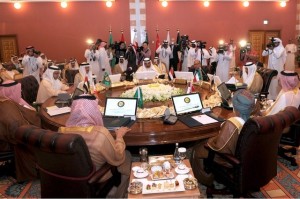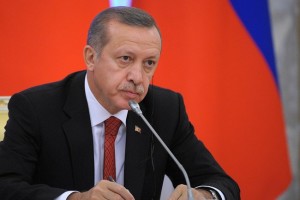by Adnan Tabatabai
Several developments and incidents in the past three decades have led to a deep rift between Tehran and Riyadh. This rivalry has mounted into antagonism. Today, the possible breakthrough in the decade-long dispute over Iran’s nuclear program has caused anxiety in the Saudi kingdom.
Observers and experts alike maintain that a comprehensive nuclear agreement between Iran and the P5+1 (the US, Britain, France, China, and Russia plus Germany) — and US-Iran rapprochement in particular — would critically undermine Saudi Arabia’s interests. But this conventional wisdom overlooks important recent developments.
Iran now capable of bold diplomacy
The new administration in Tehran is both willing and able to adopt bold steps in foreign relations. While the self-perception of being a or the regional power is as well-defined now as it was under former President Mahmoud Ahmadinejad, a new approach is now in place. The strategy is no longer to confront, provoke and humiliate competitors and to proclaim strength through isolation, but to seek cooperation through a reconciliatory approach leading to the creation of “win-win solutions,” to use the language of President Hassan Rouhani.
This political mindset is being promoted by Foreign Minister Mohammad Javad Zarif. His foreign policy approach is based on both a strong popular mandate as well as the backing of Supreme Leader Ayatollah Ali Khamenei. Indeed, whenever Zarif’s critics at home have become too outspoken, Khamenei has supported Iran’s nuclear negotiating team, calling them, for example, “soldiers of the revolution”. This enables the Rouhani government to define ambitious foreign policy goals.
Saudi Arabia in a state of weakness
In contrast to Iran’s relative stability following the exit of Ahmadinejad, the Saudi ruling elite is going through a critical evolutionary process and is, therefore, situated in a state of confusion and weakness. The urgent question of succession has already led King Abdullah to circumvent the prerogative of the 34-membered Allegiance Council and designate the 68-year-old Prince Muqrin bin Abdelaziz as deputy crown prince and possible future king. Yet some doubt whether Muqrin is capable of steering the kingdom through the challenges ahead.
The removal of Prince Bandar bin Sultan as intelligence chief has been of similar significance. Iranian officials welcomed this move and read it as a sign of failed Saudi strategies particularly in Syria. With Prince Mohammed Nayef taking over the Syrian file, a possible shift in Saudi Arabia’s Syria policy seems possible. Recent reports of Saudi-US cooperation to provide advanced anti-tank missiles to Syrian rebels, however, show that this possible shift may still divert significantly from Tehran’s position.
The kingdom will nevertheless have to pinpoint its alliances. The current rift with Qatar may indicate disintegrative processes in the Gulf. Former Assistant Secretary General for the Shura Council in Oman, Ahmad Ali M. al-Mukhaini, has been supportive of the Gulf Cooperation Council (GCC) seeking multi-level arrangements with Iran. He has even written: “We need to have a counterweight to Saudi Arabia along commercial, energy and security lines. Would this be a role for Iran? The answer is yes.”
Furthermore, the Arab Youth Survey 2014 has shown that the population of the Gulf sees regional neighbours as their biggest allies. Even polls from 2011, when the provocative Ahmadinejad was still president, also show that despite anti-Iran rhetoric by Gulf monarchy leaders, Iran came third (18%) by a large margin after Israel (71%) and the US (59%) when respondents were asked which country poses the biggest threat to regional stability. The Saudi kingdom might, therefore, be aware of the dangers of solely relying on its Western allies or exploring cooperation with Israel. In short, seeking cooperation with Iran may, after all, be less costly.
Iran’s track record of good relations
Many of President Hassan Rouhani’s cabinet members were ministers, deputies or advisors during the presidencies of Ali-Akbar Hashemi-Rafsanjani (1989-97) and Mohammad Khatami (1997-2005). Throughout those years, and particularly the 90s, Iran-Saudi relations improved before reaching a new low under Mahmoud Ahmadinejad (2005-13).
Iran’s Islamic revolution of 1979 and its expansionist ambitions caused grave concern in the Gulf region over the threat of possible Shia uprisings. The revolutionary leader Ayatollah Ruhollah Khomeini angered the Saudis by calling monarchies “un-Islamic” governments. Saudi Arabia’s desire to counter and contain revolutionary Iran also resulted in Saudi support for Saddam Hussein during the 1980-88 Iraq-Iran war.
After a decade of open hostility, tensions cooled down during the presidencies of Rafsanjani and Khatami. Strategic and economic cooperation took shape, some of which even lasted until the early years of Ahmadinejad. But the latter’s increasingly radical rhetoric, his close ties to the Islamic Revolutionary Guard Corps (IRCG), and Iran’s growing influence particularly in Iraq and Lebanon through the IRGC infuriated the Saudi kingdom, even to a point of supporting military action against Iran to halt its nuclear program.
For months, there has been talk of an Iranian high-rank delegation visit to Saudi Arabia, but it has not yet happened. Meanwhile at numerous speeches and interviews, Zarif has stressed the need to “build networks, not blocs” to tackle the many challenges the region faces. He has also repeatedly reached out to Riyadh.
An Iran-Saudi rapprochement would immediately ease the proxification of the many fragile contexts of the region ranging from Syria, Iraq and Afghanistan to Bahrain, Yemen, Lebanon and Pakistan. The respective strategic interests must be settled; the rhetoric that accentuates the sectarian divide — a discourse that has created dangerous realities on the ground in terms of identity politics particularly in Iraq and Syria – must be halted.
Saudi Arabia’s opposition to the Muslim Brotherhood, the recent decree by the King to criminalize “home-made” jihadists who fight in Syria, and tensions with Qatar regarding these issues indicate the the kingdom is trying to come to terms with Sunni extremism beyond its control. Rapprochement with Iran would, at least, minimize the dangers coming from the Shia fronts and, potentially, even lead to joint efforts to tame militant jihadist forces.
How the US can help
It’s time to convey the idea that Middle East powers must shape the future of their own neighbourhood — an idea that was chanted by protesters throughout the region during the wave of Arab uprisings that began in 2011. A gradual withdrawal of the US presence would encourage and strengthen a sense of ownership and shared responsibilities.
Asked about the major objective for the US to support Iran-Saudi rapprochement, Gary Sick, who served as an Iran specialist on the National Security Council staff under Presidents Ford, Carter, and Reagan told LobeLog: “Ideally, what the United States would want — and what every other responsible power with interests in the region should want — is for both of these key players to focus their efforts on resolving regional disputes.”
“That means that Iran needs to visibly temper its involvement with proxy forces and to actively seek rapprochement with the GCC states. Similarly, Saudi Arabia needs to turn away from its recent excursions into self-defeating and even irrational policies and return to the more cautious and pragmatic policies that have served it so well since its inception,” said Sick, now a professor at Columbia University in New York.
“Admittedly, that is asking a lot, and I doubt that it will happen overnight. Still, it describes approximately the strategic relationships that existed in the Persian Gulf in the mid-1970s and again in the early 1990s,” he said.
In order to minimize Saudi scepticism, “the United States and its allies need to bring Saudi Arabia more into the actual decision-making process on regional affairs while providing constant and persuasive reassurance of sensitivity to Saudi interests,” he said.
Considering the regional policies of the Rouhani government, it is plausible to assume that any opening signals from Riyadh will be echoed in Tehran.
Photo: Iran’s supreme leader Ayatollah Ali Khamenei (R) meets with Saudi Crown Prince Abdullah ibn Abdel Aziz, 09 December in Tehran, on the sidelines of the Organisation of the Islamic Conference (OIC) summit. Credit:AFP/Getty Images





It would be beneficial for the region and for the Moslem world in general if rapprochement and good will existed between Saudi Arabia and Iran. It could go a long way towards healing the destructive rift between Sunni and Shia.
It would also be good for the US. The only country that would not like it would be the Israelis and they would do what they could to prevent this reconciliation. Unfortunately, the US is greatly influenced by the Israeli Firsters in this country who dominate our mideast policy. The US has to break from Israel’s destructive influence on US policies, so that we can facilitate rapprochement between SA and Iran. US submissiveness to Israel is a great drawback and shame of the US government. It needs to end.
A sober interesting view. The times, they are a changing. The present course of action being take, that of so called regime change, where as the old cold war warriors/planners are calling the shots, really belong in the trash heap of history, not being implemented in today’s world. All this warmongering, needs to cease, before another world war is introduced to lower the population figures. The idea that the U.S. State Department engages in such, instead of diplomacy, doesn’t instill confidence of a peaceful future for mankind.
This is a wise and farsighted article. Initially, the GCC was formed in the wake of the Iranian revolution when the Islamic revolutionary rhetoric posed a threat to most of the conservative Persian Gulf states. During the Iran-Iraq war, the GCC became one of the biggest military and economic supporters of Saddam Hussein. Now things have changed considerably. The Iranian revolutionary zeal is a thing of the past, and the new government is seeking to improve relations with Iran’s neighbors, “especially with Saudi Arabia” according to Iranian President Hassan Rouhani who said that Tehran-Riyadh proximity will positively affect the whole region. Iranian Foreign Minister Zarif said that Iran prioritizes ties with Saudi Arabia. Abdur-Rahman bin Gharman al-Shahri, the new Saudi ambassador in Tehran, met with Expediency Council Chairman Akbar Hashemi-Rafsanjani and renewed an invitation to him by King Abdullah to visit Saudi Arabia.
All these, plus the new change of policy by Saudi Arabia, are positive moves. However, there is a need for a much bolder initiative. As its name implies, the GCC should include all Persian Gulf littoral states. Therefore, Iran and Iraq should be invited to join it and together they can try to resolve many security problems both in the Gulf as well as in Syria, Lebanon and the entire Middle East, and hopefully even put an end to the dangerous Shi’a-Sunni rift that is developing.
The Islamic Republic must reconcile with the Saudi’s, as well as other OPEC members within the Persian Gulf region in order to stabilize both its oil and gas exports and maintain prices. This is critical given the enormous capital needs Iran will have post resolution of its nuclear file. In terms of trade though, Iran is the gateway to central Asia, that is where Iran should look towards for its future economic and commercial role as a regional hub for trade and commerce. Iran could offer transit point for both oil and gas exportation to the region and an alternate route to the Asian energy markets, it could also through its rail and highway systems offer exporters to central Asia the most cost effective and efficient routes. Extensive air links can strengthen the ties. Finance, banking and services related to this enormous market will follow, and could make Tehran a hub larger than Dubai and more in line with Hong Kong and Singapore. The Persian Gulf sheikhdoms offer the Islamic Republic very little in this sense, and as such, Iran should draft laws and regulations so that it could control the expected boom in trade that could result once the differences with US and EU are a thing of the past.